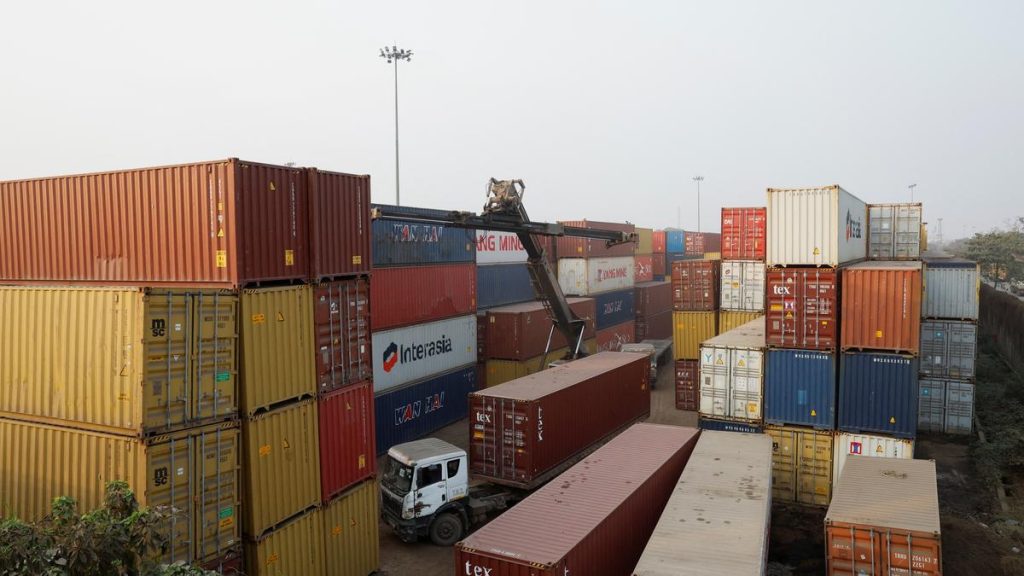Goods from sectors, including agriculture, precious stones, chemicals, pharma, medical devices, electricals, and machinery may get impacted if the U.S. will go ahead with imposing reciprocal tariffs on Indian products, according to experts.
They said that these sectors could face additional customs duties from the Trump administration because of the high tariff differential or gap, which is the difference between the import duties imposed by the U.S. and India on a product.
At the broad sector level, the potential tariff gaps between India and the U.S. vary across the sectors.
The gap is 8.6% for chemicals and pharmaceuticals; 5.6% for plastics; 1.4% for textiles and clothing; 13.3% for diamonds, gold, and jewellery; 2.5% for iron, steel, and base metals; 5.3% for machinery and computers; 7.2% for electronics; and 23.1% for automobiles and auto components.
“The higher the tariff gap, the worse affected a sector could be,” an exporter said.
U.S. President Donald Trump has said that the tariff announcements, scheduled for early morning Wednesday (April 2, 2025) , will amount to a ‘Liberation Day ‘ for the U.S.
According to an analysis of the think tank Global Trade Research Initiative (GTRI), the hardest-hit sector in agriculture would be fish, meat, and processed seafood, with $2.58 billion in exports in 2024, facing a 27.83% tariff differential.
Shrimp, a major export to America, will become significantly less competitive due to the imposition of the U.S. tariffs.
“Already our exports have antidumping and countervailing duties in the U.S. The additional hike in tariffs will make us uncompetitive. Out of India’s total shrimp exports, we ship 40% to America,” Kolkata-based seafood exporter and MD of Megaa Moda Yogesh Gupta said.
He said that Indian exporters may get some relief if the U.S. will impose similar tariffs on competitor countries — Ecuador and Indonesia.
India’s processed food, sugar, and cocoa exports may also face heat as the tariff gap is 24.99%. Its exports stood at $1.03 billion last year.
Similarly, cereals, vegetables, fruits, and spices ($1.91 billion shipments) have a tariff differential of 5.72% between.
Dairy products, with exports worth $181.49 million, could be “severely” affected by a 38.23% differential, “making ghee, butter, and milk powder costlier and reducing their market share in the US,” GTRI Founder Ajay Srivastava said.
The other products which can be affected include edible oils ($199.75 million exports and 10.67% duty gap); alcohol, wines, and spirits ($19.2 million exports and 122.10% tariff differential); live animals and animal products ($10.3 million exports and 27.75% gap).
Mr. Srivastava said that tobacco and cigarettes, whose exports are valued at $94.62 million in 2024, may remain unaffected, as the U.S. already imposes 201.15% tariffs, creating a negative tariff differential (-168.15%).
In the industrial goods segment, sectors could be impacted by American duties, including pharmaceuticals, jewellery, and electronics.
“We are keeping our fingers crossed because of the unpredictability of the Trump administration at the tariff front. But if it will be imposed, it may affect initially but not in the longer run. The whole burden, though will be on American consumers,” Mumbai-based engineering exporter SK Saraf said.
The pharmaceutical sector, India’s largest industrial export, worth $12.72 billion in 2024, faces a 10.90% tariff differential, increasing costs for generic medicines and specialty drugs.
Diamonds, gold, and silver, with $11.88 billion in exports, may see a 13.32% tariff hike, raising jewellery prices and reducing competitiveness.
Similarly, electrical, telecom, and electronics exports worth $14.39 billion face a 7.24% tariff.
According to the GTRI, machinery, boilers, turbines, and computers, with a worth $7.10 billion of exports, could see a 5.29% tariff hike, impacting India’s engineering exports.
“Chemicals (excluding pharmaceuticals), exports worth $5.71 billion, could be affected by a 6.05% tariff, reducing U.S. demand for Indian specialty chemicals,” Mr. Srivastava said adding textiles, fabrics, yarn, and carpets, with $2.76 billion in exports, can face a 6.59% tariff, making Indian textiles pricier.
Rubber products, including tires and belts, shipments worth $1.06 billion, may face a 7.76% tariff, while paper and wood articles ($969.65 million) could have a 7.87% tariff.
“Ceramic, glass, and stone products, with $1.71 billion in exports, will face an 8.27% tariff, impacting demand. Footwear, with $457.66 million in exports, faces a high 15.56% tariff differential,” he added.
Mr. Srivastava, however, said that reciprocal tariffs may not be exactly the same as the tariff differential as the U.S. has indicated that they may also factor in non-tariff barriers, VAT (GST), and currency impacts in its reciprocal tariff policy.
Published – April 02, 2025 01:01 pm IST

